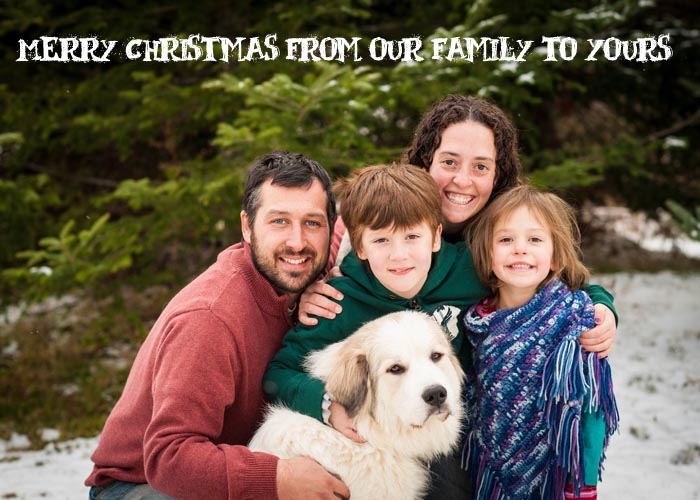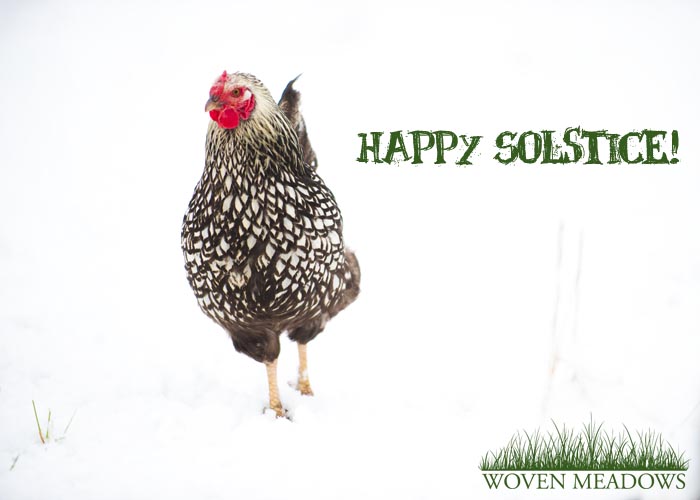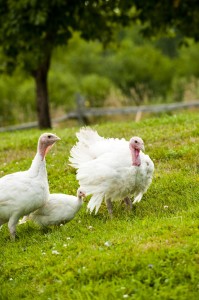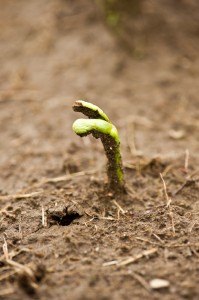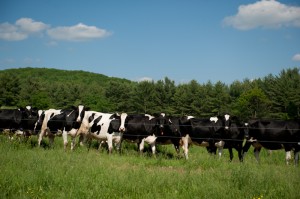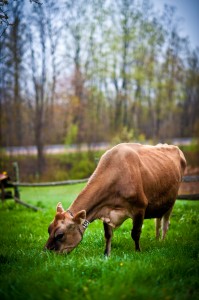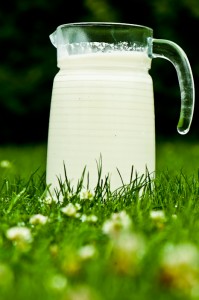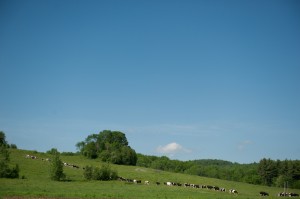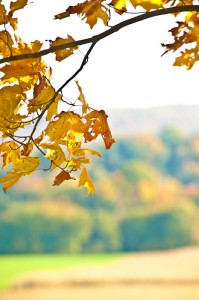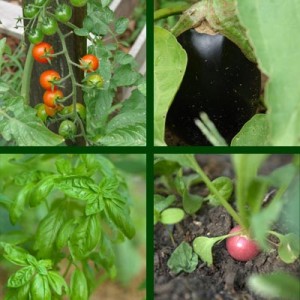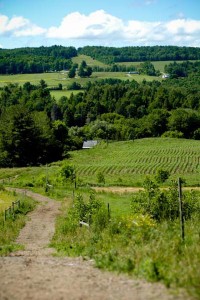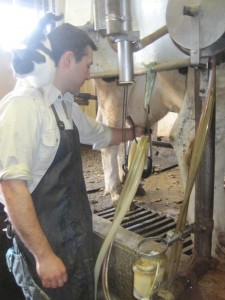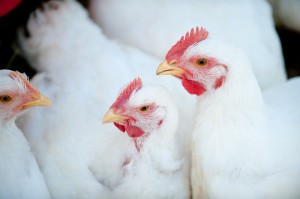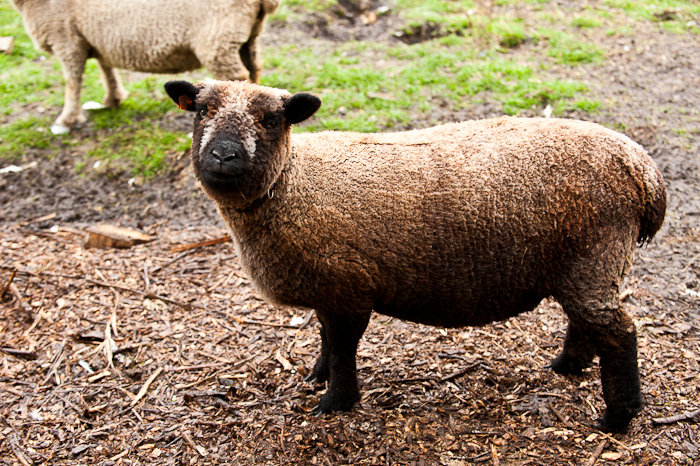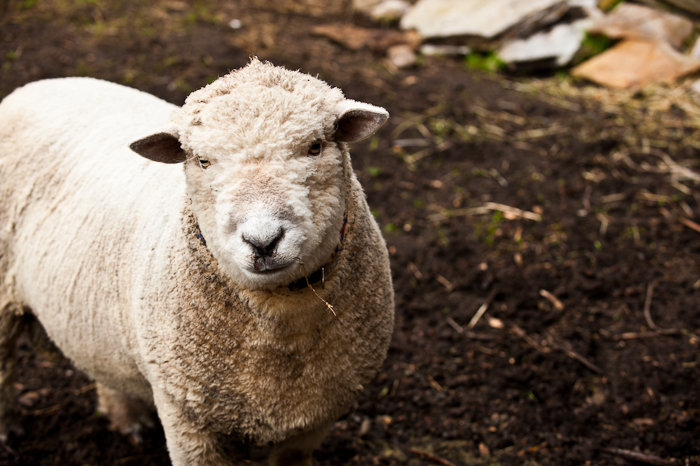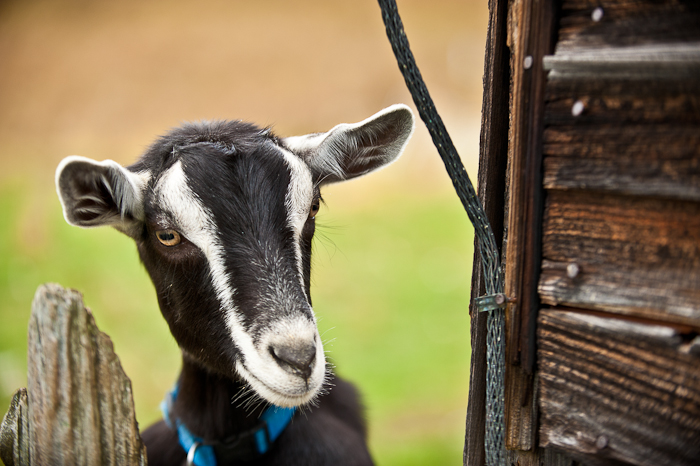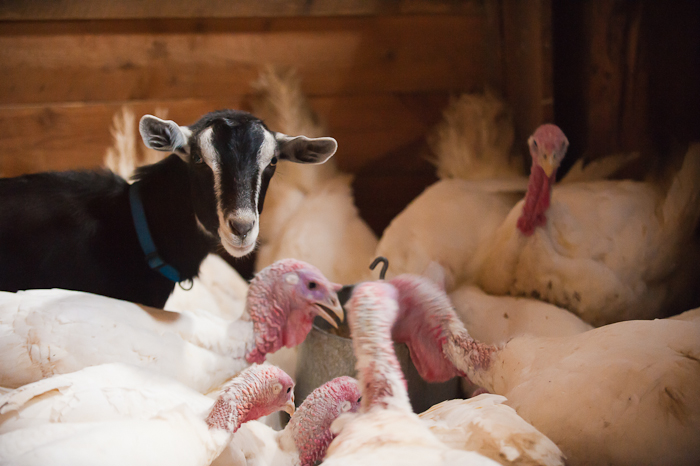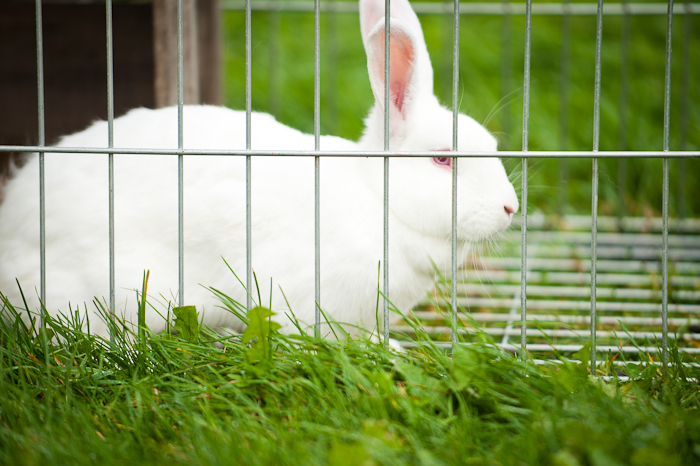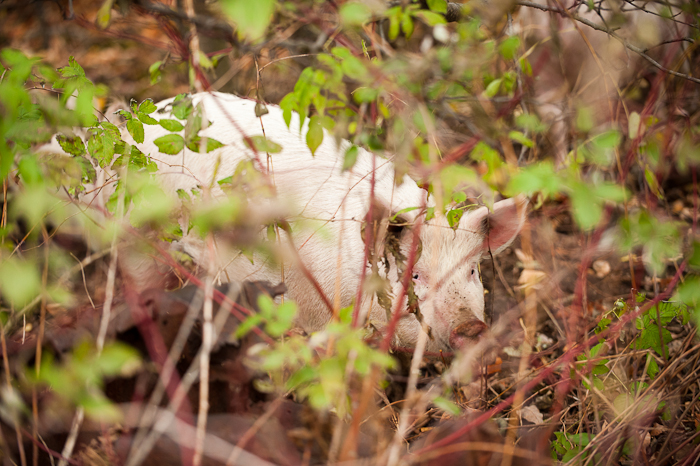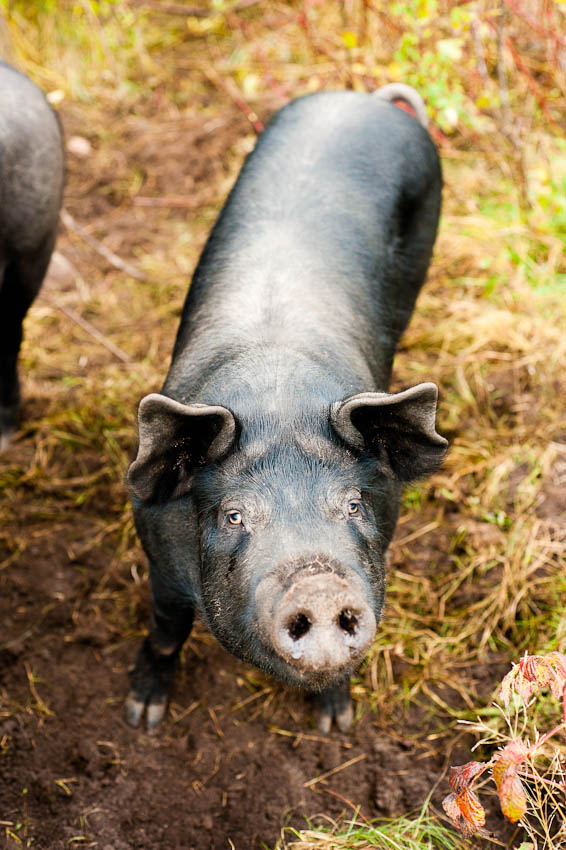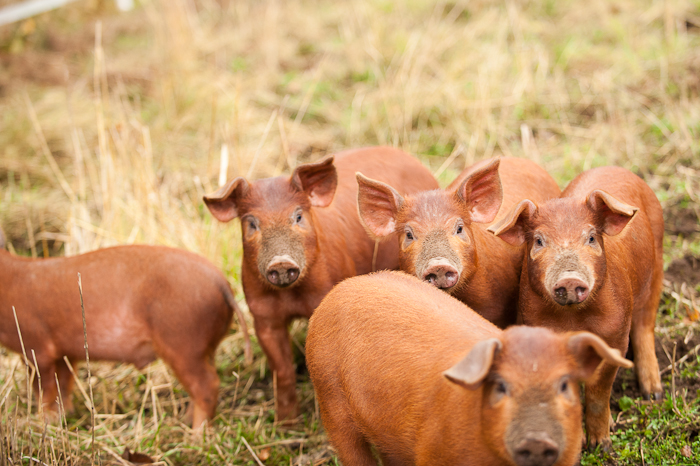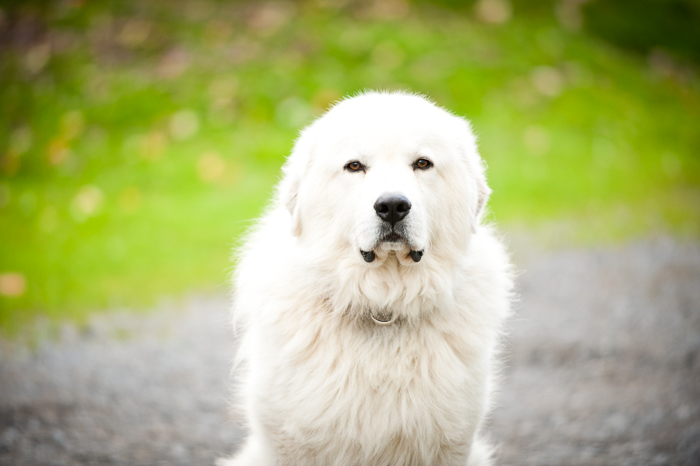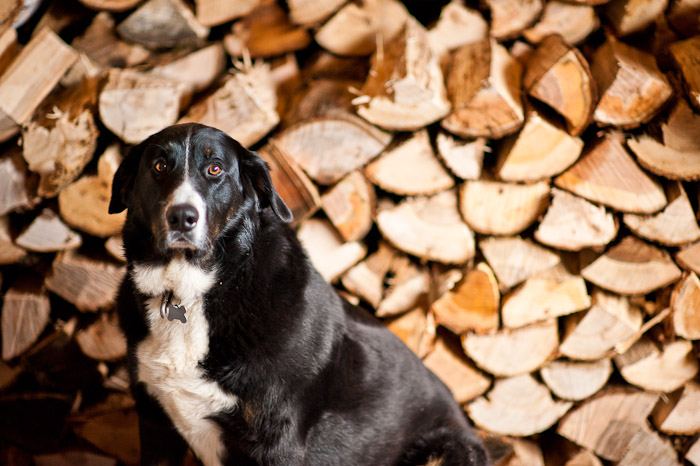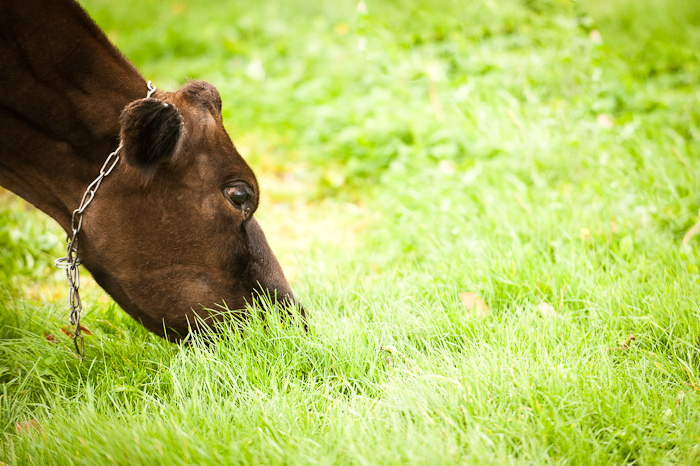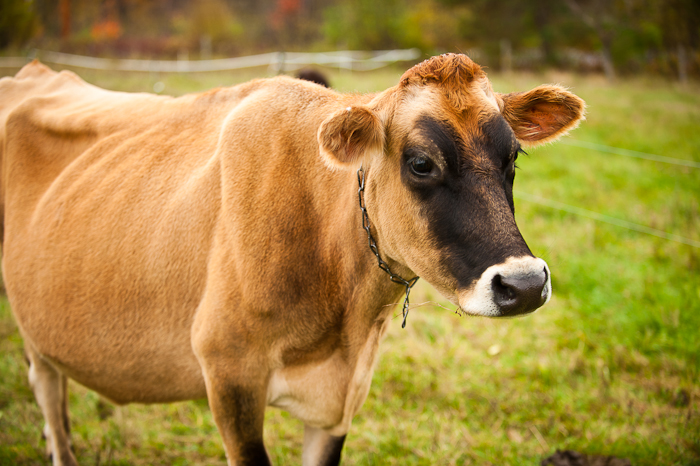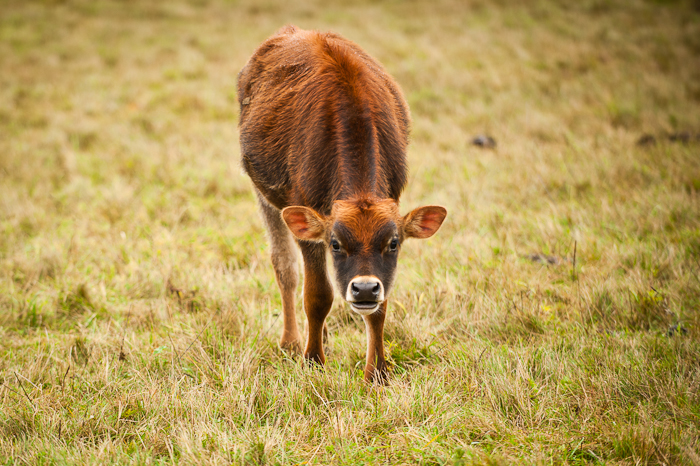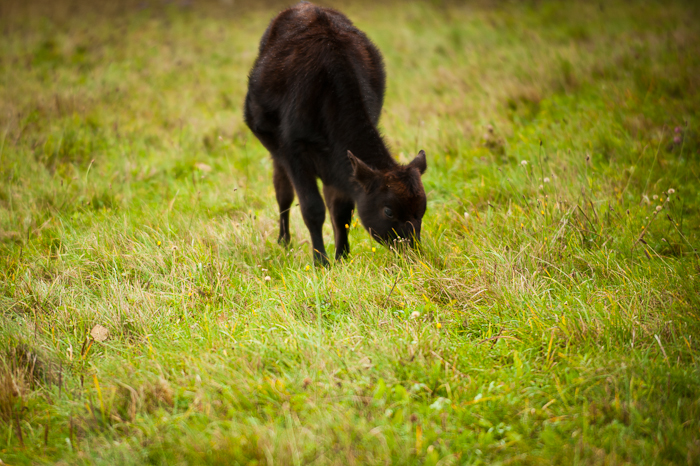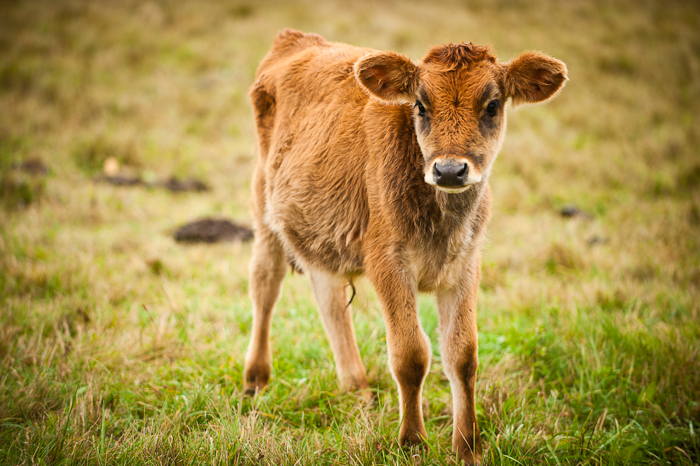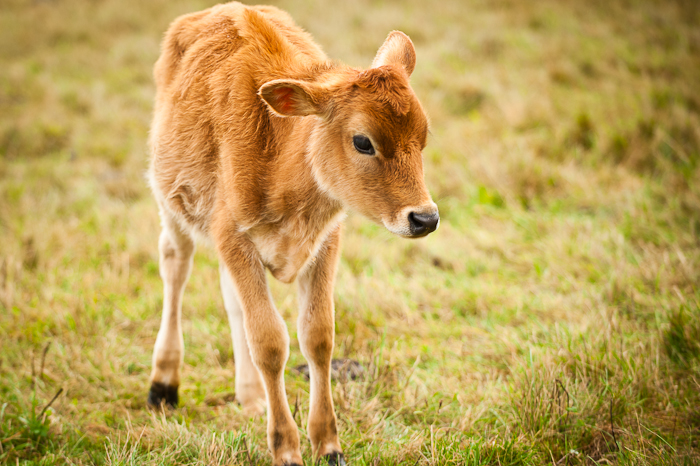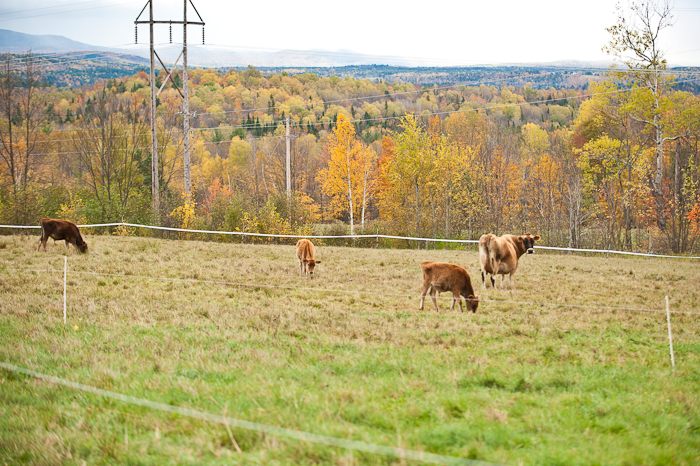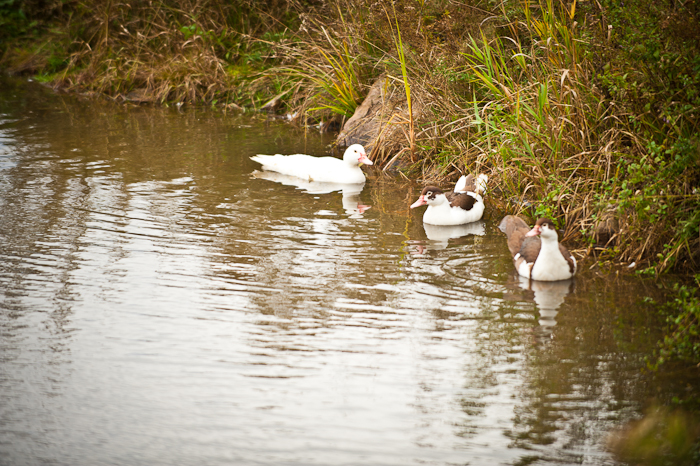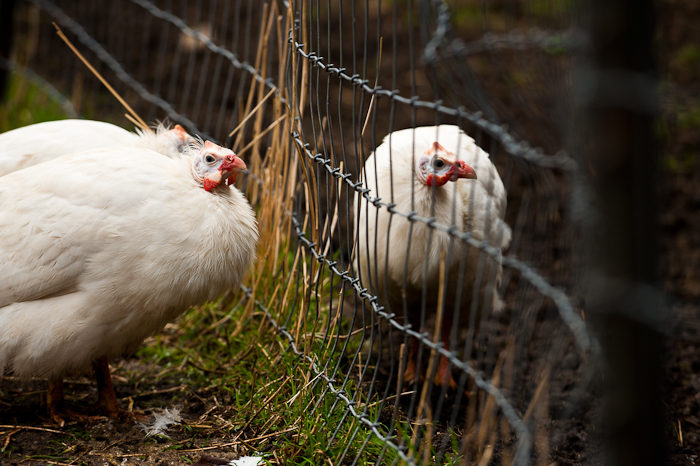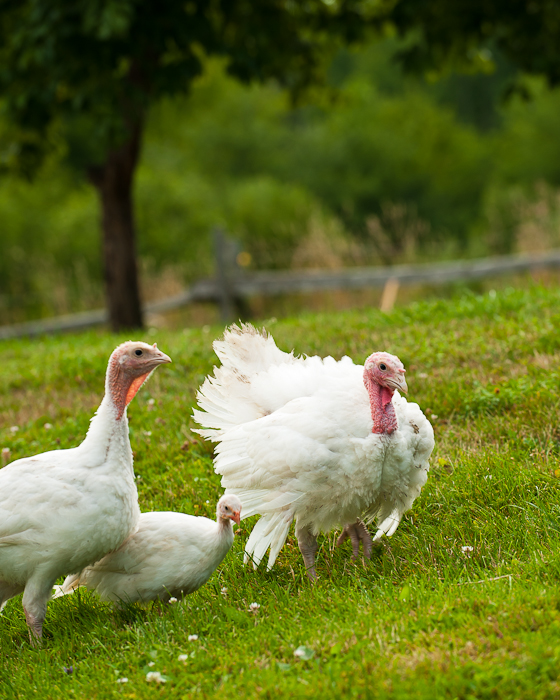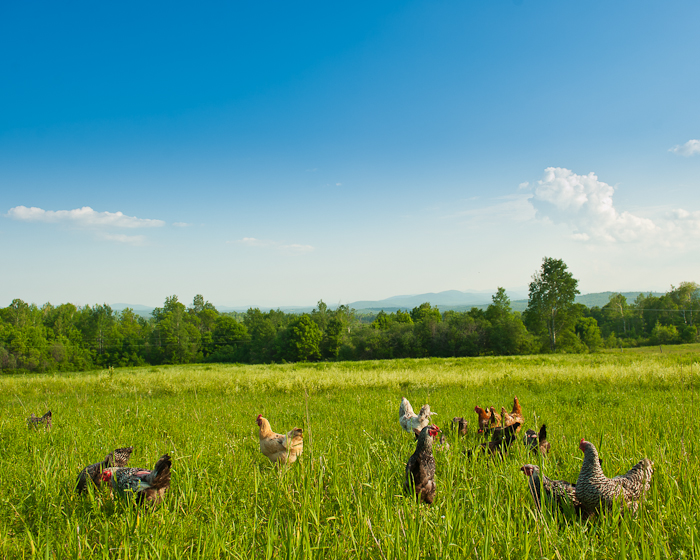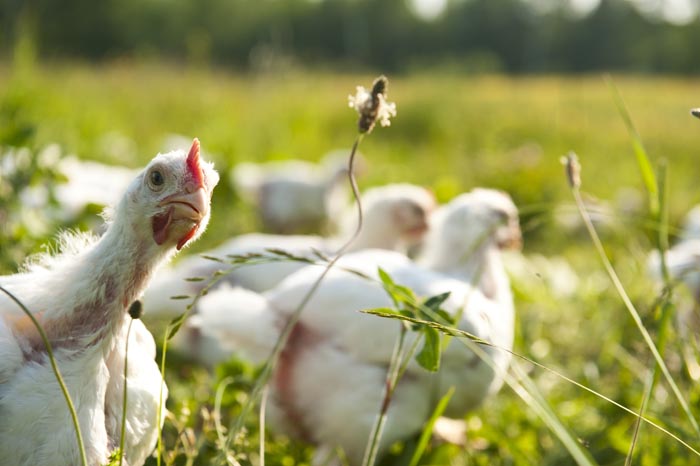So there is something Good in grazing. Which animals to graze? Cattle, sheep, and goats each have their merits, in terms of feed efficiency (yield of meat and milk in relation to amount of feed consumed), choice of forage (grasses, forbs, and browse), and effects on the pasture (post-grazing height, impacts of hoofs and manure deposits). I’m not sure one is any better than the other in respects to grazing. Having grown up with cows, that it what I know and like.
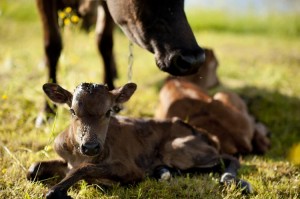 There is something to be said for milk over (just) meat, I think. For a dairy animal, you can get both: raise a female ruminant to breeding age, and she will then produce milk throughout her life. The feed maintenance requirements for a full-grown, mature animal are relatively low, and a grazing dairy breed—with a big efficient gut—can well turn plants into milk. A Jersey cow, for instance, can take 30 to 40 pounds of plant “dry matter” a day and turn it into 4 to 6 gallons of milk. Factor in the 2 or 3 months where a cows is dry (not producing milk) along with the feed for that time, and a cow comes close to producing one pound of milk for each pound of dry matter eaten! That, in turn, could become high-protein, nutrient-dense cheese, for a rough conversion of 10 pounds of plant dry matter becoming one pound of cheese (which is suitable for the majority of the human population who does not continue to digest lactose past childhood).
There is something to be said for milk over (just) meat, I think. For a dairy animal, you can get both: raise a female ruminant to breeding age, and she will then produce milk throughout her life. The feed maintenance requirements for a full-grown, mature animal are relatively low, and a grazing dairy breed—with a big efficient gut—can well turn plants into milk. A Jersey cow, for instance, can take 30 to 40 pounds of plant “dry matter” a day and turn it into 4 to 6 gallons of milk. Factor in the 2 or 3 months where a cows is dry (not producing milk) along with the feed for that time, and a cow comes close to producing one pound of milk for each pound of dry matter eaten! That, in turn, could become high-protein, nutrient-dense cheese, for a rough conversion of 10 pounds of plant dry matter becoming one pound of cheese (which is suitable for the majority of the human population who does not continue to digest lactose past childhood).
Because cows, sheep, and goats each prefer overlapping but different types of food, combinations of two or all of these on the same pasture increases both animal and pasture productivity overall. We’re just getting started with sheep and goats, but long-term we may see more of these alongside our cattle.
In addition to milk and meat, cows make something else of value—poop and pee. These animal outputs are however valuable plant inputs, high in nitrogen and phosphorus. Manure is also a food itself, namely for flies and other bugs. These of course can become a nuisance to people and animals alike. But such grubs are cherished by chickens. 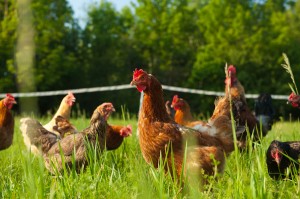 Here is where poultry enters the picture. Laying hens love to scratch in cow pies, looking for bugs and grubs, and by hanging out with the cows, they help reduce the number of flies that mature, while at the same time turning those bugs into food for us (eggs and meat). The action of spreading out cow-pies also helps distribute that fertility, helps grass recover faster, and encourages the cows to graze more evenly when returning to the same pasture later in the year. They scratch at the thatch as well, quickening decomposition and letting more sunlight hit the soil. Chickens also pick up and pick out other bugs and seeds in the pasture, and do forage from plants as well. Other poultry are better foragers, like turkeys and ducks; ducks are also excellent slug-and-snail hunters. Ducks do a garden good.
Here is where poultry enters the picture. Laying hens love to scratch in cow pies, looking for bugs and grubs, and by hanging out with the cows, they help reduce the number of flies that mature, while at the same time turning those bugs into food for us (eggs and meat). The action of spreading out cow-pies also helps distribute that fertility, helps grass recover faster, and encourages the cows to graze more evenly when returning to the same pasture later in the year. They scratch at the thatch as well, quickening decomposition and letting more sunlight hit the soil. Chickens also pick up and pick out other bugs and seeds in the pasture, and do forage from plants as well. Other poultry are better foragers, like turkeys and ducks; ducks are also excellent slug-and-snail hunters. Ducks do a garden good.
Chickens would need quite a bit of land to find all the food they need and still produce eggs, so they do receive a supplement of organic grain feed. But there is a logic here as well. Like the cows, chickens also poop a nitrogen-rich, pasture-rejuvenating fertilizer. Much of our meadows are in rough shape after years of neglect, with a heavy thatch mat, low plant density, and spindly growth. The pasture following a span of meat chickens, however, looks 10 times (or more!) better—the grass is coming in greener and thicker, the product of poop and of the action of scratching. Moreover, whenever we humans eat some meat or milk from pasture-fed animals, there are nutrients that were consumed from the pasture which do not return. Long-term, this would create a deficiency in certain nutrients, like phosphorus and potassium. One way to keep things in balance would be to add rock-powders, compost, or other fertilizers. Another, more indirect route, however, is to in essence feed the nutrients to the chickens, feed people from the chickens, and still feed the soil in turn.
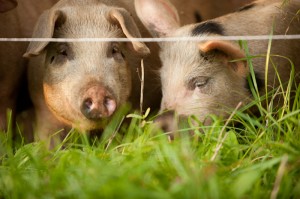 Pigs play a similar role. Pigs can forage, browse, and root for a good deal of food, though most still need some form of supplement to grow healthily at a reasonable rate (a mature boar or sow, however, I’ve read can get all they need by foraging alone). Like the work of chickens on pasture, pigs work the soil, and the pigs here are currently at work reclaiming land that has become overgrown with bushes and briars. Pigs also work like two-step composters, as we can feed waste foods to them, from which they get energy and nutrition, and make manure in the process. Similarly, by rotating pigs through the woods, they add back some fertility which is removed whenever we harvest wood.
Pigs play a similar role. Pigs can forage, browse, and root for a good deal of food, though most still need some form of supplement to grow healthily at a reasonable rate (a mature boar or sow, however, I’ve read can get all they need by foraging alone). Like the work of chickens on pasture, pigs work the soil, and the pigs here are currently at work reclaiming land that has become overgrown with bushes and briars. Pigs also work like two-step composters, as we can feed waste foods to them, from which they get energy and nutrition, and make manure in the process. Similarly, by rotating pigs through the woods, they add back some fertility which is removed whenever we harvest wood.
Pigs for us will really shine in connection with a cheese-making creamery. Only about 10% of milk makes it into cheese, the rest is whey. Whey is mostly water, along with about 20% of the original milk protein, a bit of butterfat, some mineral salts and other solids, and some lactose sugars and lactic acid. Whey can be consumed by people, straight up, or through pretty energy-intensive processes to heat it further, producing a small amount of ricotta, or, as is commercially done, dried to make whey powder. Or, more simply, whey can be fed to animals, like pigs. Pigs make great use of the remaining protein in whey for their protein needs, and with some extra roughage and energy foods, make some nice pork for us.
I’ve mentioned that the grain we feed the pigs and poultry is certified organic. The reasons for this are many. First, recalling points from the brief history that brought our family here, one was a concern with the nutrition of our food and health of our bodies. We don’t relish eating food laced with chemical pesticides and preservatives. While pesticide residues in non-organic grains tend to be low (most of it goes into the leaves and plant, which we don’t eat), “safe” limits aside, so much the better for not passing any of it onto the animals and their meat, and in turn to ourselves.
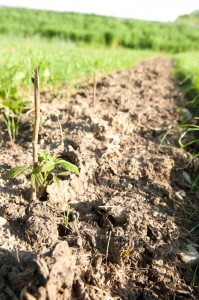 Second, just like purchasing “certified organic” food from the grocery store is currently your best bet (though not a guarantee) that the food was produced in a sustainable, responsible manner, so too the organic food we feed our animals. A big factor here is pollution and contamination. On our farm, we don’t want to pollute the soil and water—and in turn, other plant and animal life—with chemicals, and we don’t want the products we use to have done so either. That is all part of our holistic outlook—everything and everyone “woven” together.
Second, just like purchasing “certified organic” food from the grocery store is currently your best bet (though not a guarantee) that the food was produced in a sustainable, responsible manner, so too the organic food we feed our animals. A big factor here is pollution and contamination. On our farm, we don’t want to pollute the soil and water—and in turn, other plant and animal life—with chemicals, and we don’t want the products we use to have done so either. That is all part of our holistic outlook—everything and everyone “woven” together.
Third, we prefer not support the breeding of super-pests and super-weeds, resistant to the pesticides used to “control” them, nor the growth of seemingly productive yet nutrient-poor crops. The use of chemical pesticides and petroleum fertilizers do both. The practices of cover cropping, compost, and crop rotation are the preferred methods, well used in organic agriculture, with just as much mechanical tillage and weeding as necessary.
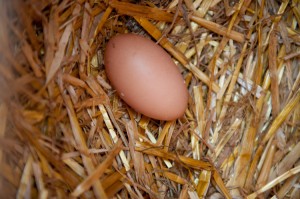 So here is the raison d’etre of the bulk of our farm and farming here at, and on our, Woven Meadows. Not least of which is the social, community element: growing Good Food for Good People. Food which is healthy, humanely grown, and environmentally sound, for the sake of everyone involved, everyone woven together now and later, here and there. We will continue to weave in other strands of farming, like fruits, vegetables, and honey, and continue to improve our practices wherever possible, whenever it seems a Good Thing to do.
So here is the raison d’etre of the bulk of our farm and farming here at, and on our, Woven Meadows. Not least of which is the social, community element: growing Good Food for Good People. Food which is healthy, humanely grown, and environmentally sound, for the sake of everyone involved, everyone woven together now and later, here and there. We will continue to weave in other strands of farming, like fruits, vegetables, and honey, and continue to improve our practices wherever possible, whenever it seems a Good Thing to do.

